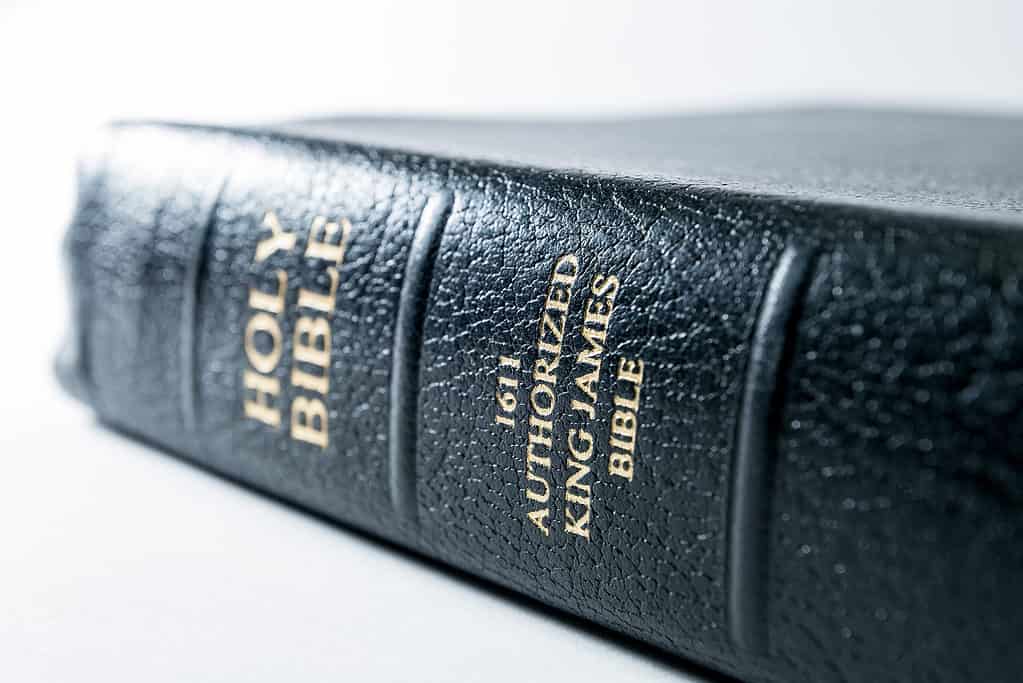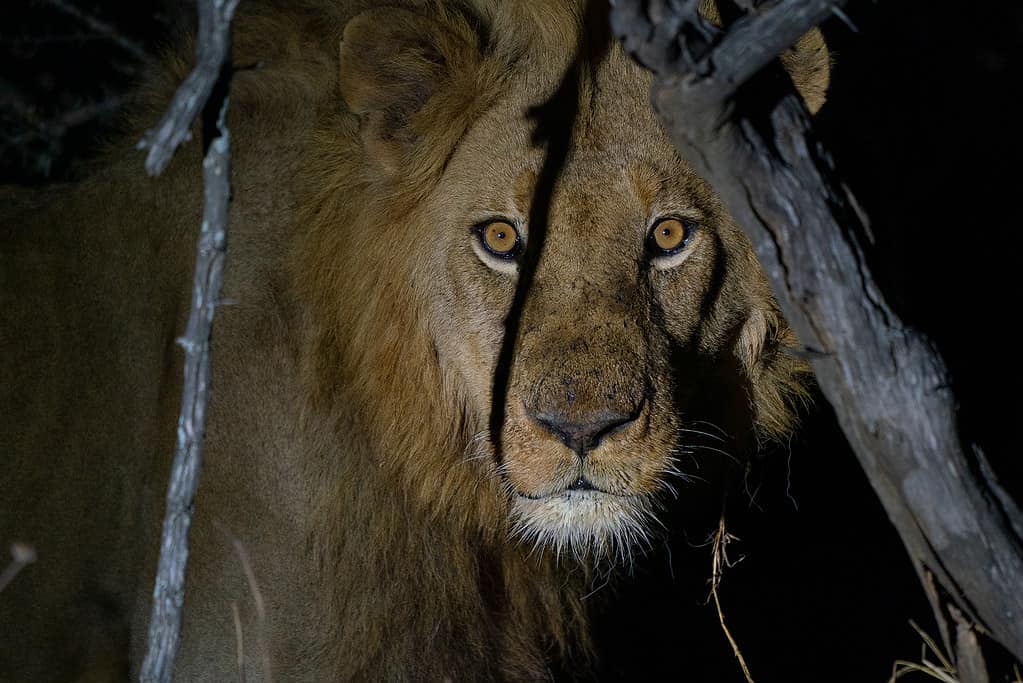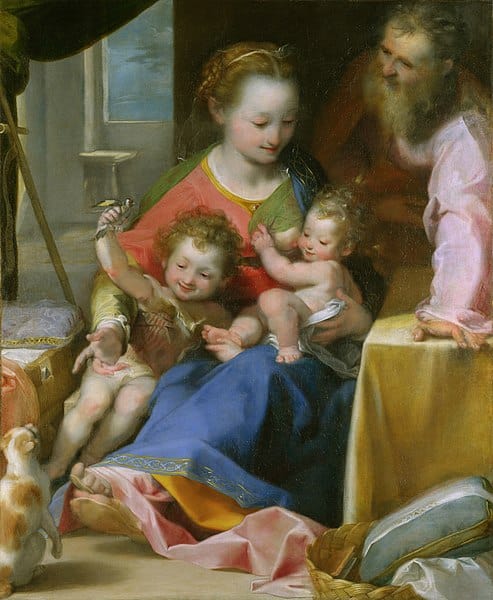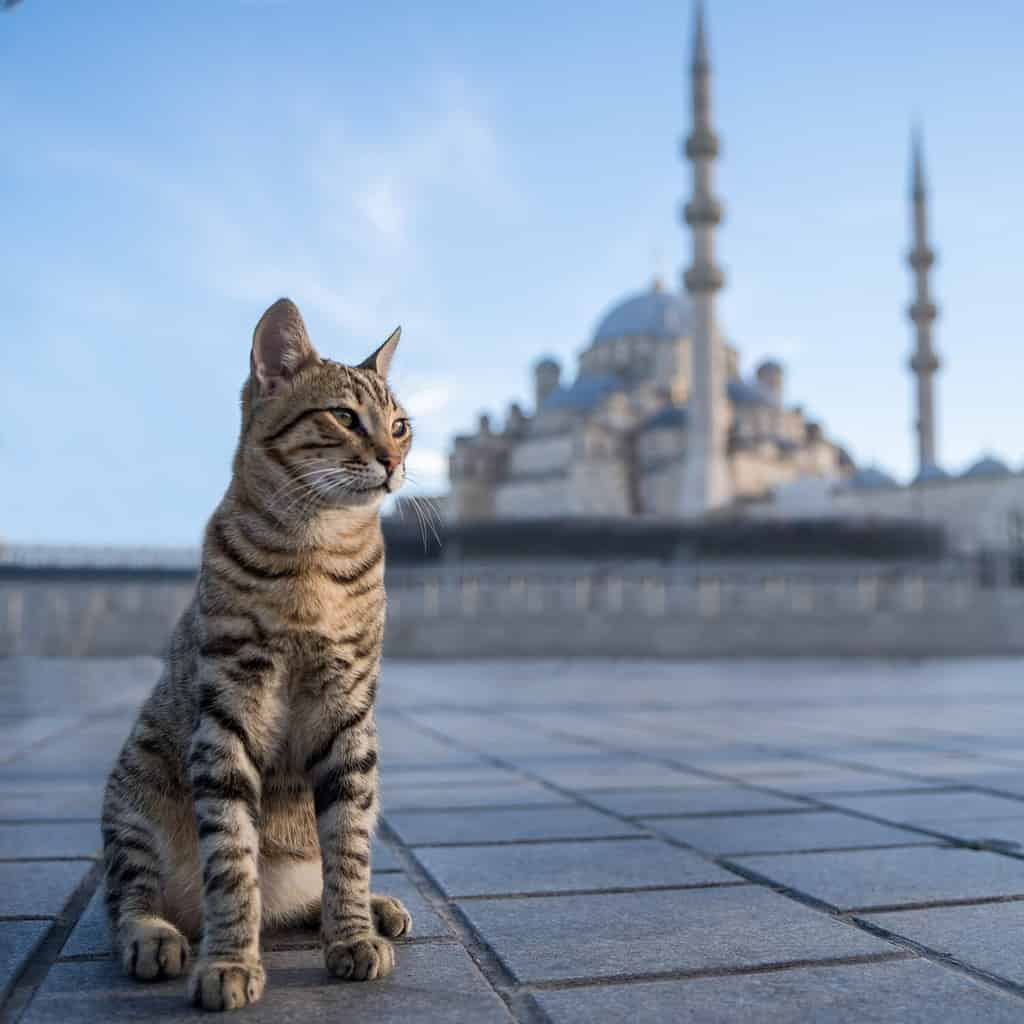The Bible doesn’t say anything about domestic cats in both the Old and New Testaments. However, there are mentions of big cats in various contexts, and as Christianity evolved, pet cats became a part of Christian iconography. Why is this? We’ll go over cats in religion and discover what the Bible says about cats.
Why Doesn’t the Bible Say Anything About Pet Cats?

The Bible doesn’t mention domesticated cats, but it does reference big cats.
©iStock.com/NathanMerrill
The Bible doesn’t discuss domesticated cats because the idea of a pet cat didn’t exist in Biblical lands at the time the book was compiled. While cats were domesticated at this point, their use as companions was not part of the contemporaneous culture. The Bible was written to convey understandable teachings, so using a feline representation that’s not well-known defeats the digestibility of Biblical stories.
Discover What the Bible Says About Big Cats
The Bible has a lot to say about big cats, and they are referenced more than 150 times. Lions are mentioned the most, and in almost all situations, their status as a top predator is equated with strength and dominance. Whether this strength symbolizes good or evil depends on the context of the passage. We’ll go over a few examples now.
God as a Lion: A Reference in the Old Testament of the Bible

In Hosea 13:7, God is compared to a
lion
.
©SteffenTravel/Shutterstock.com
Hosea 13:7: “So I will be to them like a lion; like a leopard by the road I will lurk.” This passage refers to God waiting for ungrateful wealthy nonbelievers like a big cat hanging out while stalking prey. The implication is that God is dominant, and will strike down those that do not believe in him.
Believers as a Lion: Proverbs Expounding Advice in the Old Testament
Proverbs 28:1: “The wicked flee when no one pursues, but the righteous are bold as a lion.” This proverb is using the lion as a symbol of bravery and strength. While sinners are fearful and hide from anything they perceive as a threat, righteous followers of God face challenges boldly like fearless lions.
Proverbs 30:30: “A lion, which is mighty among beasts and does not turn away from any.” The lion in this context is shown again as a fearless apex predator. Because the lion is at the top of the food chain, it doesn’t fear anything it encounters because it knows it can overcome it. Believers in the teachings of the Bible are encouraged to behave in the same way.
Satan as a Lion in Both the Old and New Testaments

In both the Old and New Testaments, evil is compared to a lion.
©Pranesh Luckan/Shutterstock.com
1 Peter 5:8: “Be sober, be vigilant; because your adversary the Devil walks around like a roaring lion, seeking whom he may devour.” St. Peter describes the devil as a loud and dangerous lion looking for people to consume. However, Peter doesn’t recommend that believers live in fear of lion-sized strength. Rather, believers should keep a clear head and their wits about them so that the Devil is not able to steer them from their belief in God.
Psalm 10:9: “He lies in wait secretly, as a lion in his den; he lies in wait to catch the poor; he catches the poor when he draws him into his net.” This psalm doesn’t directly reference the Devil by name, but it does allude to unbelievers acting like Satan. It’s comparing the patient stalking of a hunting lion to sinners who patiently wait to take advantage of vulnerable people.
Cats in Christian Renaissance Art
Cats were more common in Christian society by the Renaissance, so they are addressed in contemporaneous art and culture. Their symbolic purpose in Renaissance art differs by artist, but a couple of common themes remain prominent when comparing images of domestic felines.
Cats as Evil in Renaissance Art

In this depiction of the Last Supper, a domesticated cat represents the Devil as it sits by Judas.
©Domenico Ghirlandaio/ via Getty Images
In The Last Supper by Domenico Ghirlandiao, a painting from 1481 CE, Judas sits opposite the other disciples with a domestic cat near him. This references the prevailing Catholic belief that cats were the embodiment of Satan.
Cats gained a negative connotation in the Catholic church as a means of counteracting the beliefs of alternative religions. For example, cats were revered in Ancient Egypt and were a symbol of gods like Bast.
During the Renaissance, cats were burned or dropped from buildings and killed. This was seen as a symbolic act against witchcraft and the Devil during Lent.
Cats as Pets in Renaissance Art

Federico Barocci’s
The Madonna of the Catshows a domesticated cat playing with Jesus.
©height: 112.7 cm (44.3 in); width: 92.7 cm (36.4 in) – Original / License
Federico Barocci’s The Madonna of the Cat from 1575 CE shows a cat at Mary’s feet. The cat in this painting is a pet, and it is playing with John the Baptist who is holding a bird in his hand. Jesus stops nursing to pay attention to the cat that Mary is pointing at as they all sit together in a bed chamber.
To Barocci, the cat is used as a symbol of family and fertility in depictions of the Virgin Mary. This positive association is in other works of his. As such, it follows suit with other great artists of the time who were beginning to see cats positively.
Artists were considered scholars in the fifteenth century. They were fond of cats because they kept away pests that destroyed their works and books.
Discover What Islam Says About Cats

Cats are allowed in mosques because they are considered clean animals.
©amydelion/Shutterstock.com
While the Quran doesn’t mention domesticated cats, other religious texts within Islam do address them. They are considered clean animals, and they are allowed in mosques and homes. Cats are often seen in famous holy sites including the Great Mosque of Mecca.
Not only do they keep themselves clean, but they also protect areas and food against mice, rats, and other small pests. Cats were also a favorite among Islamic scholars because they killed rodents that ruined their texts.
Human food that cats chomp down on is still considered halal, and water that they’ve lapped from can still be used for wudu. However, consuming a cat is not halal. That’s because they’re a fanged predator which is a forbidden food source.
The Prophet Muhammad loved cats. It’s widely believed that a cat named Muezza was one of his favorites though this cat isn’t specifically mentioned in the hadith. Muezza was most likely first mentioned in a noncanonical story that began in the sixth century CE.
Thank you for reading! Have some feedback for us? Contact the AZ Animals editorial team.








